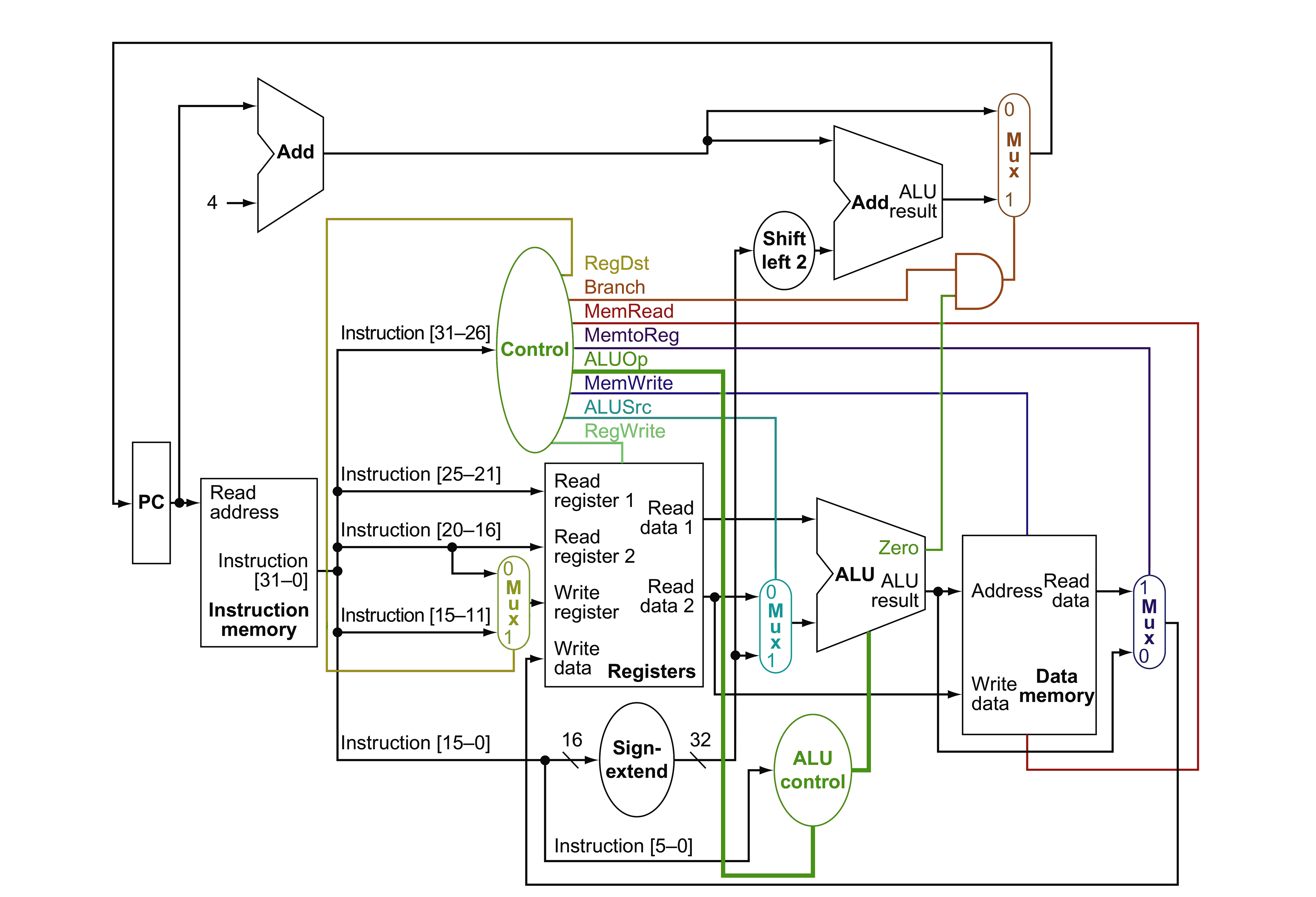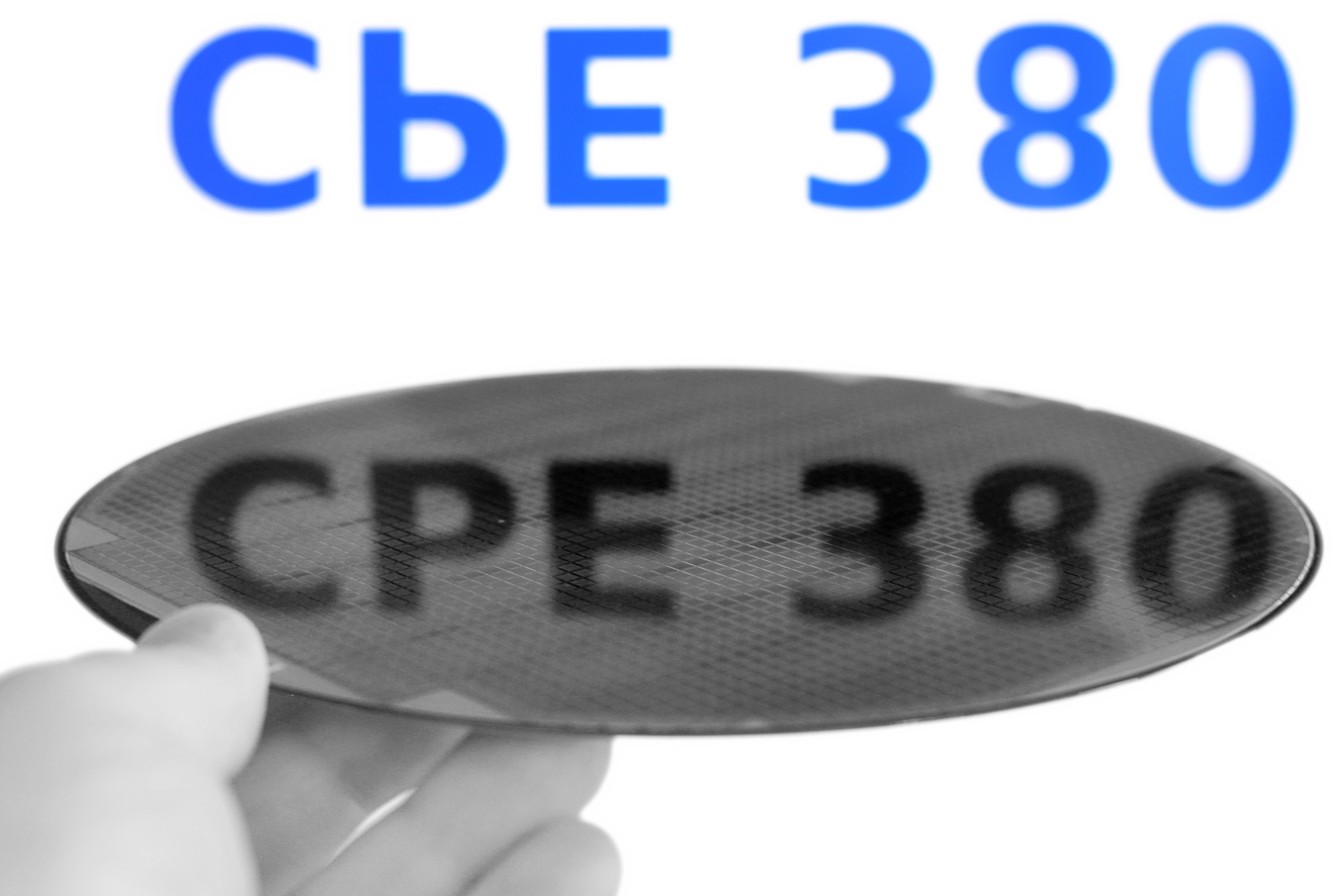

References: CPE380 Single-Cycle Design
The lecture slides as a PDF
provide a good overview of everything with LOTS of Verilog code
showing how everything is done in detail. I don't expect
students to be able to write Verilog implementations like these
from scratch, but I do expect that you can follow the logic, and
at this stage I expect you can handle making minor
modifications. The "complete" single-cycle design presented in
the slides is http://aggregate.org/EE380/onebeq.html.
The textbook does have essentially the same single-cycle design
covered, but the description is significantly different, and so
are some control signals. In fact, the design isn't consistent
in various versions of the text and associated materials, with
things like the 0/1 connections for multiplexors varying. Don't
let that bother you -- remember that the design isn't
the important thing here, the process by which you design
is. The tetxbook also doesn't talk about Verilog
implementations....
At this stage, you should be getting comfortable with
reading, understanding, and making minor changes to Verilog
designs. For that, here are some good references:
-
Icarus Verilog (iverilog and vvp)
-
This is the primary free software tool we'll be using for
compiling and simulating Verilog code. It is actually part of
gEDA. Note that
you can install it on Ubuntu Linux systems by simply selecting
it in the Software Center or Synaptic -- it's a standard part of
the Ubuntu distribution, as well as having been ported to
Windows, etc.
-
Icarus Verilog Simulator CGI Interface
-
So that students wouldn't have to deal with installing and
manually running iverilog, vvp, and
covered, Professor Dietz created a WWW browser
interface that allows running them on servers in his lab via a
form interface. This is what's been used for the various Verilog
examples in the lectures, and you can use it for all the Verilog
encountered in this class. There are a few restrictions, mostly
involving the fact that the WWW interface does not allow file
I/O: thus, $dumpfile doesn't take a filename and the
VMEM "files" are read using $readmemh0(...),
$readmemh1(...), etc.
-
EDA playground
-
Here's another WWW interface for running Icarus Verilog... and
various other tools including some commercial simulators.
Requires Log In for use, but registration is free.
-
An Introduction To Verilog (PDF) and Icarus Verilog & Friends (PDF)
-
These are the slides Prof. Dietz prepared for CPE480 overviewing
Verilog as a programming language and how to use free software
tools to develop hardware designs using Verilog.
-
ASIC World
-
This WWW site has a multitude of really nicely prepared
materials showing how to use Verilog. The only catch is that
it very freely mixes different levels all the way down to
transistors... be aware we don't want you doing that here.
-
IEEE Standard for Verilog Hardware Description Language
-
Verilog began as a proprietary HDL around 1983.
Compared to most other hardware design tools at that time,
it is unusual in that it allows specifications to mix
a variety of different levels of hardware abstraction,
even including non-synthesizable programming constructs.
It is now one of the most commonly used HDLs.
 Computer Organization and Design.
Computer Organization and Design.

